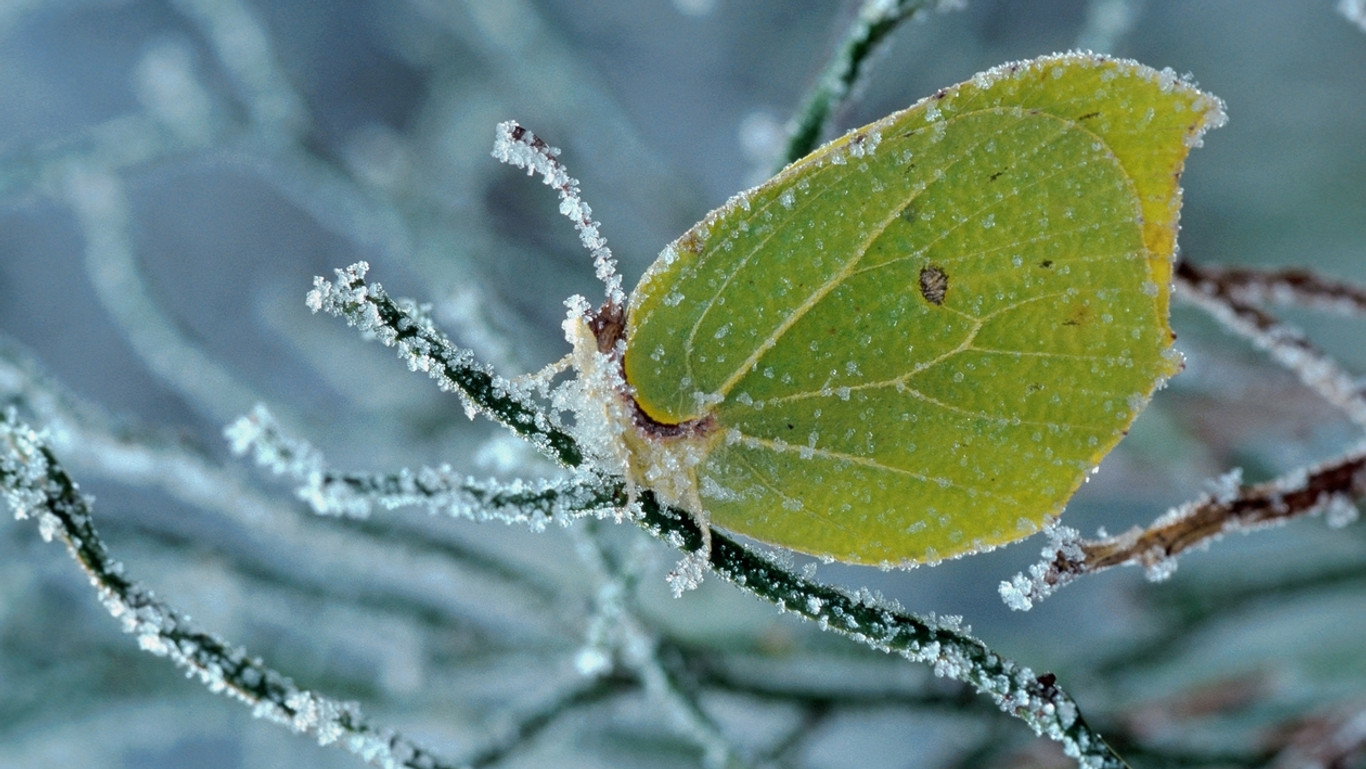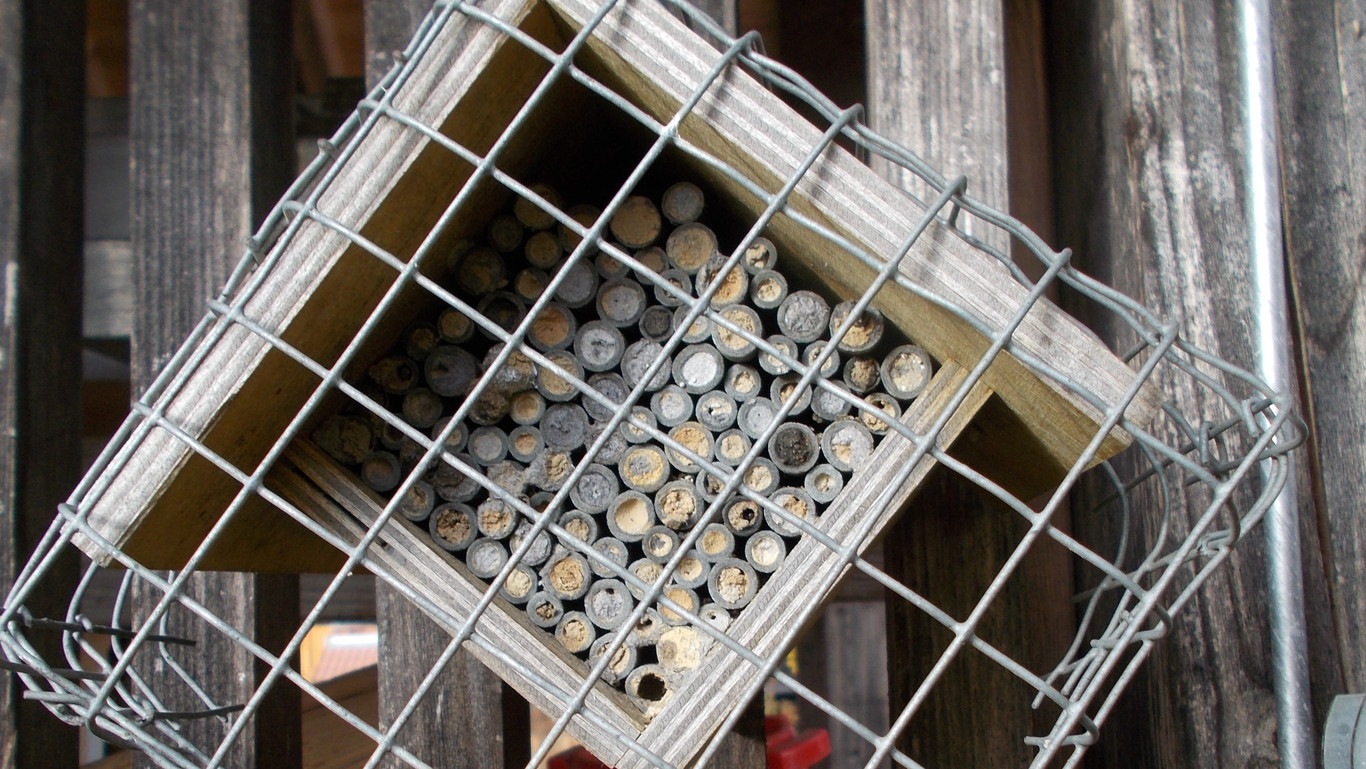Summer is definitely over. The nights are cold, the days inhospitable. Whether insects freeze, whether they experience cold as unpleasant, is unknown. In any case, they have developed successful strategies to deal with cold.

Life-threatening problems caused by frosty temperatures are not usually experienced by insects in this country. They have developed successful strategies for dealing with the cold. Butterflies, beetles and other insects can easily cope with a crisp winter with snow and dry frost. These animals have more difficulty with warmer, wet winters. Then they have to keep cranking up their metabolism, and that costs energy. They usually don’t find anything to eat. The other problem is fungi, which attack them in cold, damp weather.
Contents
Insect organism in winter
Most insects look for a sheltered place and remain there, frozen, until the days become longer and the temperatures more comfortable. As a rule, this happens as a larva, as an egg or well packed in the pupal case, i.e. in one of the robust juvenile stages. However, there are also insects that survive the winter as adults. This group includes a handful of butterfly species, including the Small Fox and Peacock Butterfly. The moths wait for spring with their wings folded and hanging upside down in nooks, caves and nest boxes, as well as in garden sheds and attics.
“Have to watch out for them coming out in the spring, though. Because otherwise it comes to death at the window when the first spring days come.” Christian Stiersdorfer, State Association for the Protection of Birds
Antifreeze in the blood
The great exception among butterflies is the lemon butterfly, which hibernates outdoors. To do this, the lemon butterfly can be frozen. This allows it to have a kind of antifreeze in its blood. It prevents ice crystals from forming in the butterfly’s body, which could puncture the cell walls, causing tissue death.
Dont worry
So there’s no need to worry about a snowed-in or iced lemon butterfly; the fellow manages beautifully and needs no human help.
How wild bees survive the winter
In the case of the colony-forming wasps and bumblebees, the young queens crawl into quiet quarters in the fall: bumblebees prefer loose soil or under a layer of leaves, wasps like to hide in caves, niches or rotten wood.
Wild bees that live alone, on the other hand, almost always survive in pupa form. Fat-eaten and cold-starved, they rest in their brood cells in the ground, in scrawny bramble vines or in hollow stems. Therefore watch out: If you bare your garden in the fall and cut back balcony perennials neatly, you may be killing next season’s pollinators.
“Leaving things like that is good, and only then clearing them away in the spring. Those old stems certainly have their aesthetics. If you wait for the first hoarfrost, even the ugliest faded flower is then suddenly beautiful again.” Christian Stiersdorfer, Landesbund für Vogelschutz
Insect bedroom under the pile of leaves
Lacewings and ladybugs also overwinter in the adult stage. Both species love piles of leaves. You can also help these beneficial insects under the wings on your balcony by offering them a wooden box the size of a shoebox and filled with straw. Cover the open side with slanted wooden slats or a slotted lid and hang the whole thing protected from rain. Done.

If you are tinkering anyway, you can screw tightly meshed wire or a wooden plate in front of the insect hotel. Both prevent birds from using the hotel as a practical food dispenser. The clever great tit likes to help itself to the cold insect buffet. The same goes for the great spotted woodpecker.
But insect nests are not only found in the places intended for them. The small clay-brown cells of the rusty red mason bee, for example, have already appeared in the rabbet of window frames and in the screw holes of garden tables. Again, just leave them alone. Neither nests nor occupants cause any damage. But if such a cell is broken or destroyed, the larva inside it must die.
“We want to stay out …”
What you should never do: Take found nests or animals into the apartment out of pity, warns Christian Stiersdorfer of the Landesbund für Vogelschutz. The supposed rescue into the warm is in reality a death sentence.
“There they consume an incredible amount of energy, but have nothing to eat. From there, it’s better if they sit frozen somewhere and wait for spring.”
The insect organism is not designed for winter activity, but for a resting phase. Insects that stray into heated rooms in the fall should therefore be given a friendly but firm airing.

